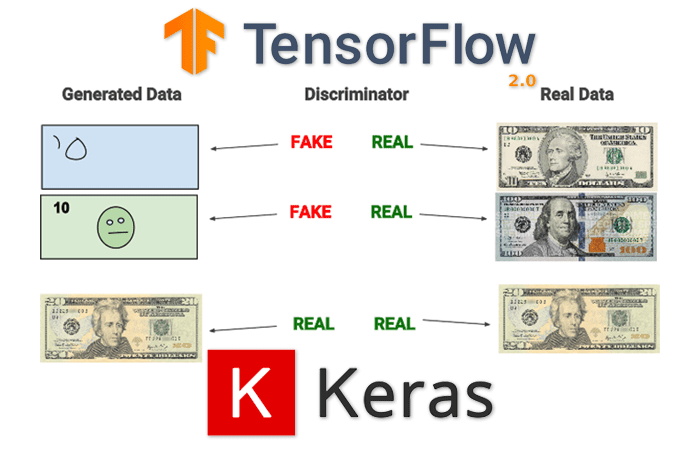In this tutorial you will learn how to implement Generative Adversarial Networks (GANs) using Keras and TensorFlow.
Generative Adversarial Networks were first introduced by Goodfellow et al. in their 2014 paper, Generative Adversarial Networks. These networks can be used to generate synthetic (i.e., fake) images that are perceptually near identical to their ground-truth authentic originals.
In order to generate synthetic images, we make use of two neural networks during training:
- A generator that accepts an input vector of randomly generated noise and produces an output “imitation” image that looks similar, if not identical, to the authentic image
- A discriminator or adversary that attempts to determine if a given image is an “authentic” or “fake”
By training these networks at the same time, one giving feedback to the other, we can learn to generate synthetic images.
Inside this tutorial we’ll be implementing a variation of Radford et al.’s paper, Unsupervised Representation Learning with Deep Convolutional Generative Adversarial Networks — or more simply, DCGANs.
As we’ll find out, training GANs can be a notoriously hard task, so we’ll implement a number of best practices recommended by both Radford et al. and Francois Chollet (creator of Keras and deep learning scientist at Google).
By the end of this tutorial, you’ll have a fully functioning GAN implementation.
To learn how to implement Generative Adversarial Networks (GANs) with Keras and TensorFlow, just keep reading.
#tensorflow #keras #deep-learning #data-science #developer
